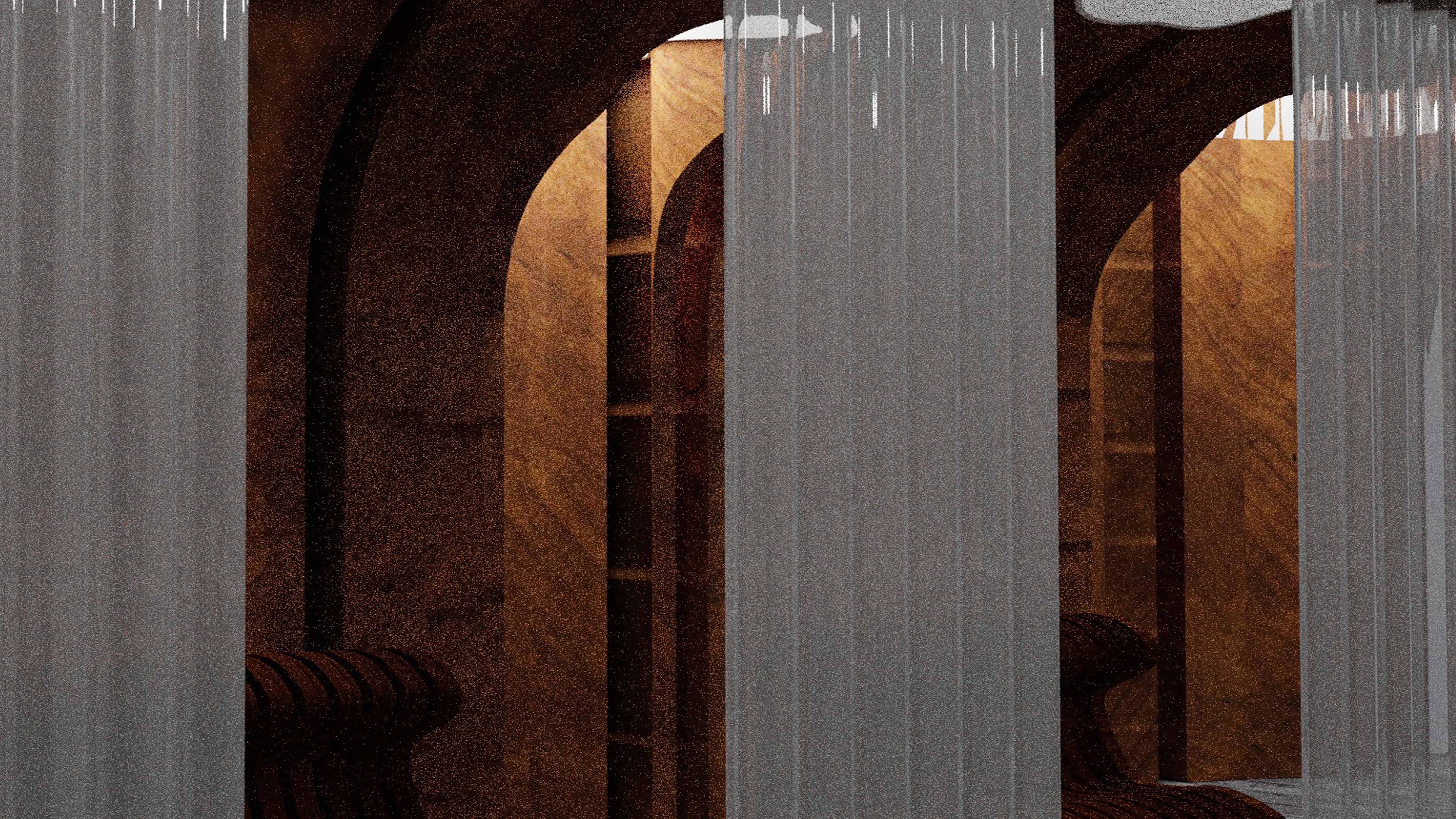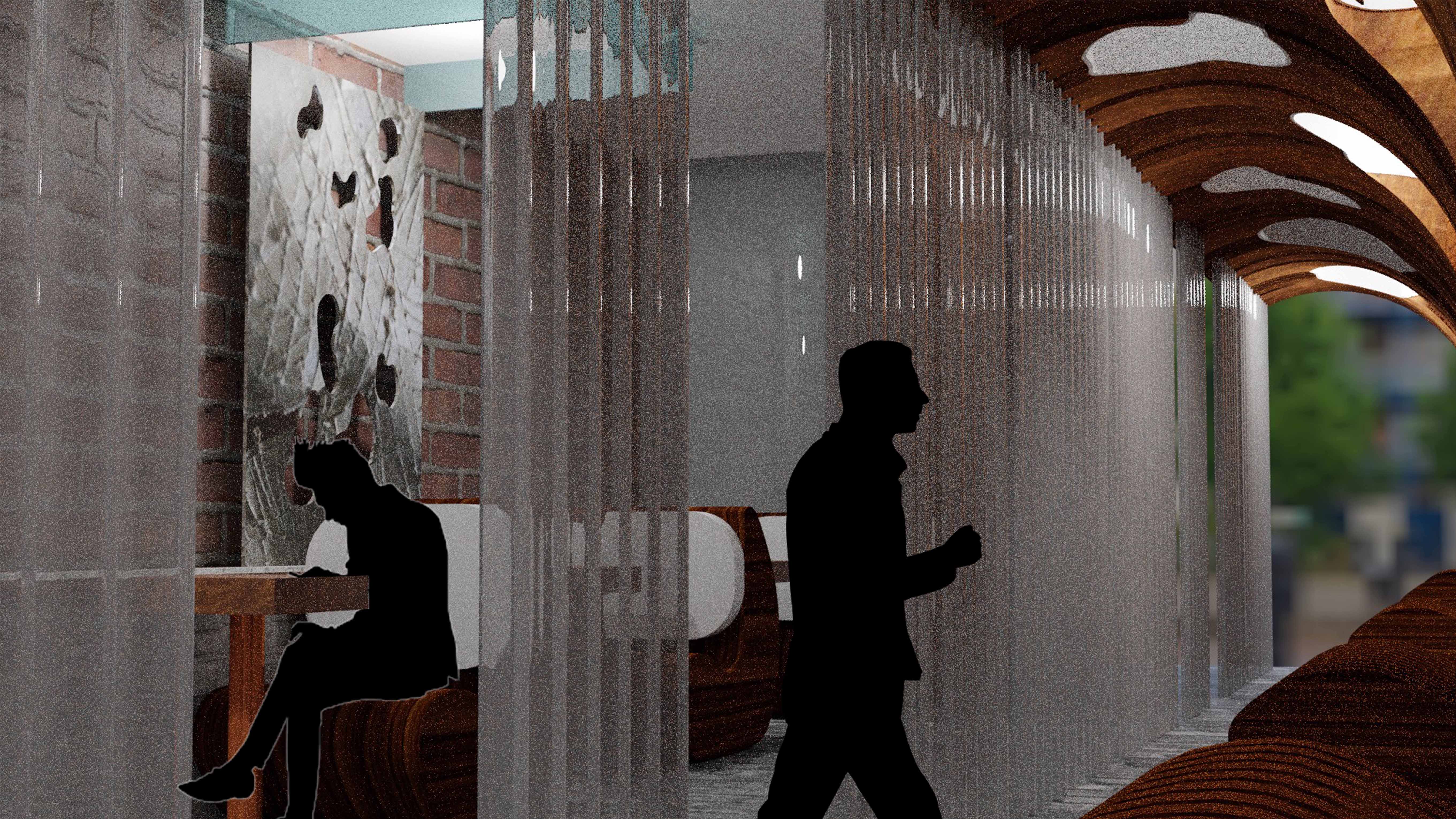
My spatial design Organic Cinematics proposes a transformation of the existing Imperial Lane into a cinematic space, building on the design of NZ Architects Fearon and Hay and the qualities of the heritage building. My design explores the contrast between the lightness of cinematic projection and the heaviness of a reclining body. This is played out at a number of scales. The weighty heritage building and its dark interior are punctuated through the insertion of lightwells. The movement of people is projected as images onto a series of textile screens. The reclining viewer is supported by ribbed timber structures which curve and reach towards the lightwells. The interplay of building, darkness, embodied viewing, and projection define in this scheme a new form of urban cinematic experience.
My design intervention in Imperial Lane responds to two key aspects of cinematic viewing; firstly, the comfort of watching from a reclined position in the dark, and secondly the animated movement of light projection on a screen. My design proposes a transformation of the cavernous space of Imperial Lane through the addition of ribbed wall structures with artificial lightwells and fabricated screens.
To support a new form of cinematic experience which draws on the movement and everyday actions of building’s occupants, and the material qualities of light and shadow. By amplifying the movement of people as cinematic sequences projected onto a series of fabricated screens.
The solid ribbed timber structure series in my design help encase the reclining body as the seats are built into the wall. This allows the body to recline fully within the space comfortably. Although the reclining of a body is heavy, similar to the heaviness of the timber structures, the body is relaxed as it takes in the projection of others on the screens. The timber reaches up to the ceiling before it arches overtop, further immersing the body in a dark cinema where light and movement meet to allow the occupants movement as a sequenced projection on screens.
Light and movement have been merged together to project movement onto the screens. Laying within the ribbed structures are lightwells, these lightwells are essential to the space as they not only light up sections of the dark interior, but they also light up the screens. In this design light becomes fabricated. The lightwells are spread throughout the ribbed structure so all screens can be used to project on and be viewed. The lightwells allow pockets of light to fall on the screens and throughout the space to invite people in. Using the pockets of light to light up the screens allows the occupants of the space to have a snippet of their everyday life projected on screen allowing others to view it. Fabrication for the screen was chosen carefully. It needed to allow light and shadows to pass through. Light and shadow are how the occupant’s movement becomes projected. The movement of people combined with the lightwells creates a cinematic sequencing of events to play out on the screen, with each movement and interaction to change every day. This allows the occupants to experience a new form of urban cinematics.




